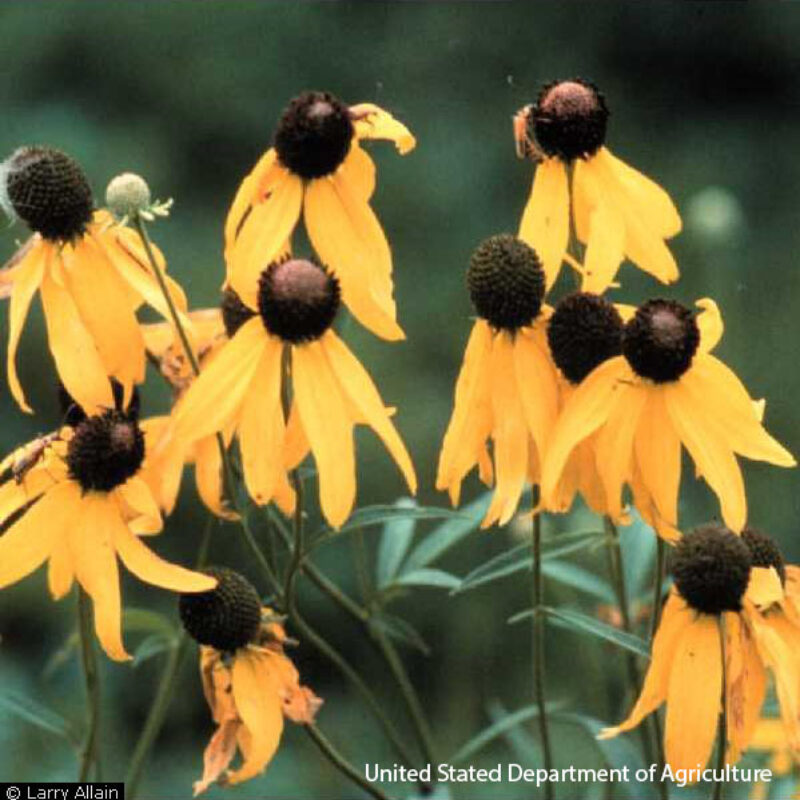Prairie ConeflowerRatibida pinnata
Taller than similar yellow coneflowers, Gray-headed Coneflower. Found in dry prairies and savannas, it is drought tolerant and transplants easily.
USDA symbol: RAPI
General Information
| Plant Type | Forb |
|---|---|
| Height | 4 feet |
| Light Exposure | Sun, Part Sun |
| Soil Moisture | Dry |
| Bloom Color | Yellow |

Tolerances
| Flooding / Inundation Tolerance | Moderate |
|---|---|
| General Resilience | 8 |
| Salt Tolerance | Medium |
| Stress Tolerance | Drought Tolerant, Fire Tolerant |
Pollinator Value: High
| Bloom Months | July to October |
|---|---|
| Larval Host of | Bees, Moths |
| Specific Pollinators Hosted | Numerous bee species, Synchlora aerata |
| Pollinator Benefit | Insect Pollinated, Provides Nectar, Stem Nesting, Supports Generalists |
Project Planning
| Project Type | Boulevard, Erosion Control, Shoreline Buffer, Upland Buffer |
|---|---|
| Coefficient of Conservatism | 6 |
| Herbivore Sensitivity | Medium |
| Lifespan | Perennial |
| Rate of Spread | Fast |
| Soil Stabilization | Deep |
| Vegetative Reproduction | Clonal |
Range
| County | Blue Earth, Brown, Carver, Cottonwood, Dodge, Faribault, Fillmore, Freeborn, Goodhue, Houston, Jackson, Kandiyohi, Le Sueur, Lincoln, Lyon, Martin, McLeod, Mower, Murray, Nicollet, Nobles, Olmsted, Pipestone, Ramsey, Redwood, Renville, Rice, Rock, Sibley, Steele, Stevens, Wabasha, Waseca, Washington, Watonwan, Winona, Wright, Yellow Medicine |
|---|---|
| Ecoregion | Driftless Area, Lake Agassiz Plain, North Central Hardwood Forests, Northern Glaciated Plains, Northern Lakes and Forests, Northern Minnesota Wetlands, Western Cornbelt Plains |
| Approximate Eco Province | Eastern Broadleaf Forest, Laurentian Mixed Forest, Prairie Parkland, Tallgrass Aspen Parklands |
